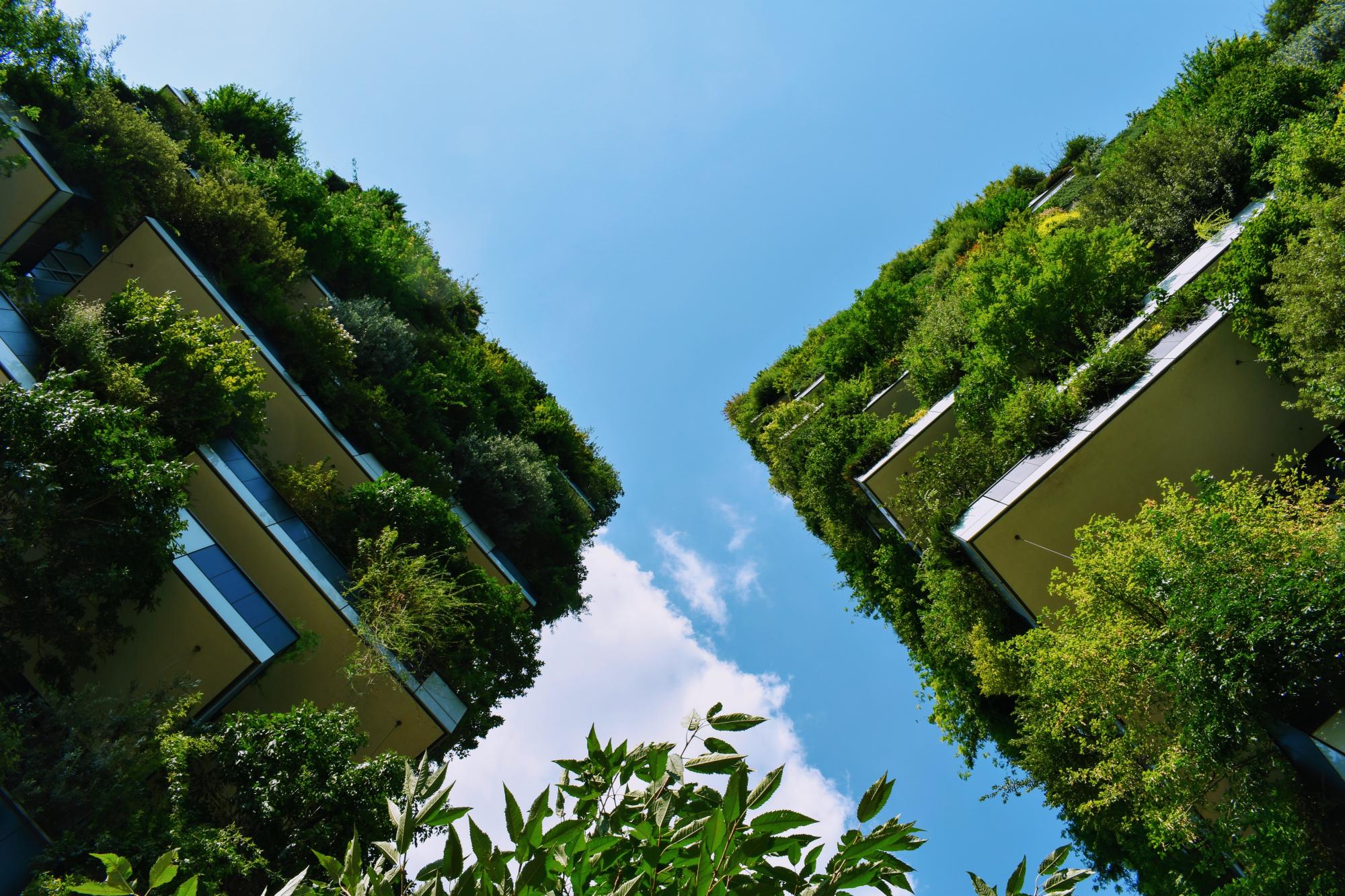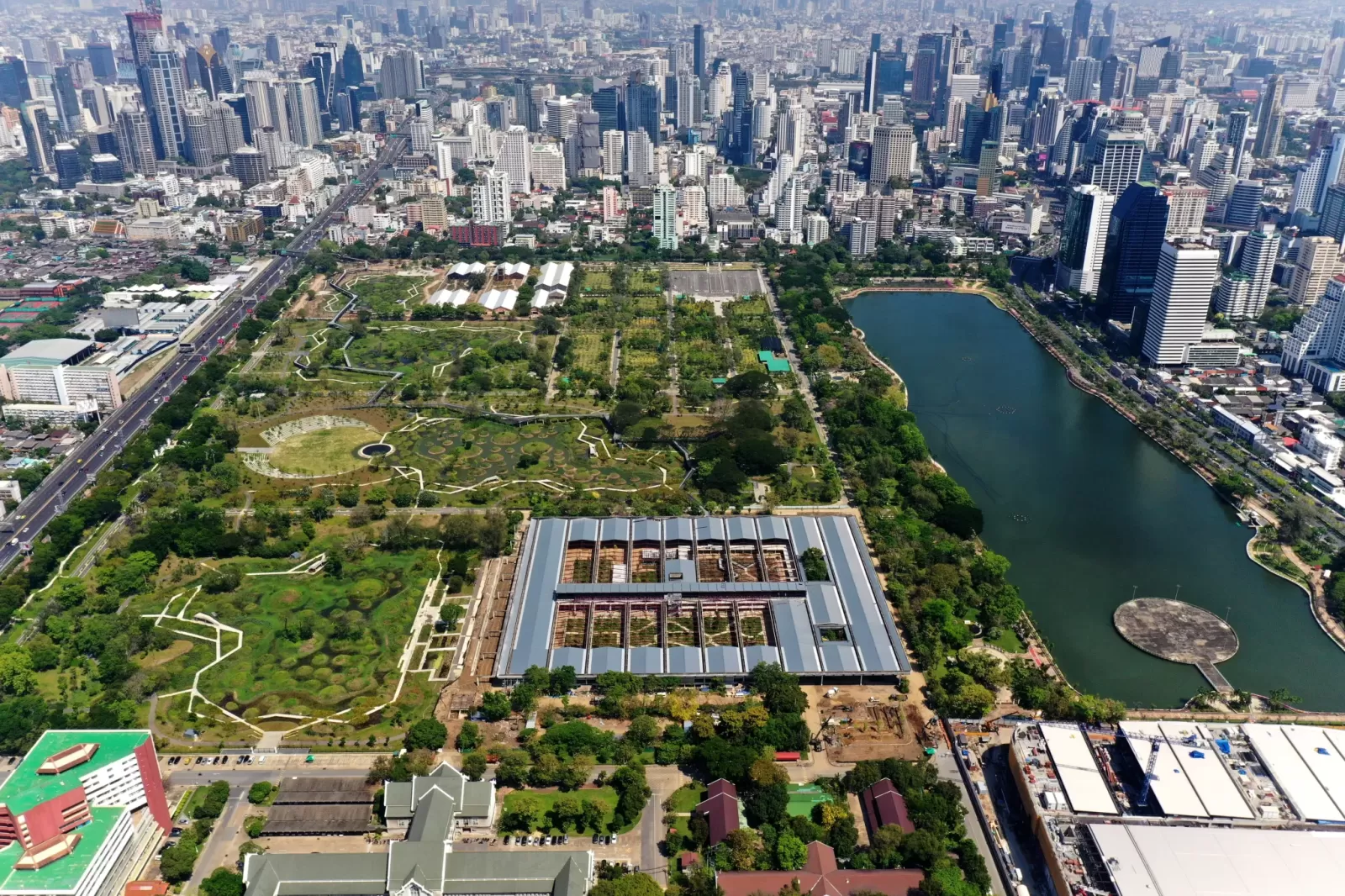Benchakitti Forest Park was created as the extension of the existing Benchakitti Water Park, which is located near the central business district of Bangkok, Thailand. The Forest Park is built in an old Thai Tobacco Factory area. The main concept of the park is to bring the forest into the city and support urban biodiversity while offering leisure activities for the people. The main features in this project include constructed wetlands, nature learning and exercise trails (for running and bicycling), a learning centre, an urban farming area and multipurpose open space for gathering and event activities. Benchakitti Forest Park can be divided into 2 parts. The first part is a green outdoor area including the wetlands, all trails and an outdoor amphitheatre. This first part was completed and open to the public in 2022. The second part is the renovation of buildings into museums and the creation of an urban farm and other facilities associated with the building. This second part is still under construction. (Ref. 1,2,3)
Overview
Nature-based solution
- Blue infrastructure
- In-land wetlands, peatlands, swamps, and moors
- Community gardens and allotments
- Community gardens
- Green areas for water management
- Swales and filter strips
- Parks and urban forests
- Large urban parks or forests
Key challenges
- Green space, habitats and biodiversity (SDG 15)
- Habitat and biodiversity restoration
- Habitat and biodiversity conservation
- Green space creation and/or management
- Regeneration, land-use and urban development
- Conversion of former industrial areas
- Promote natural styles of landscape design for urban development
- Water management (SDG 6)
- Flood protection
- Stormwater and rainfall management and storage
- Health and well-being (SDG 3)
- Enabling opportunities for physical activity
- Creation of opportunities for recreation
- Social justice, cohesion and equity (SDG 10)
- Social interaction
- Environmental education
- Sustainable consumption and production (SDG 12)
- Sustainable production
Focus
Project objectives
Implementation activities
Biodiversity conservation or restoration-focused activities
Biodiversity conservation:
- Protect and enhance urban habitats
- Preserve and strengthen existing habitats and ecosystems
- Create new habitats
- Preserve and strengthen habitat connectivity
- Protect species
- Undertake specific measures to protect species
- Undertake specific measures to protect native species
- Means for conservation governance
- Raise public awareness
Biodiversity restoration:
- Restore species (native, endangered, or unspecified)
- Restore native species
Main beneficiaries
- National-level government
- Citizens or community groups
- Marginalized groups: People with functional diversities
Governance
Management set-up
- Government-led
Type of initiating organisation
- National government
Participatory approaches/ community involvement
- Unknown
Details on the roles of the organisations involved in the project
Project implemented in response to ...
Financing
Total cost
Source(s) of funding
- Public national budget
Type of funding
- Direct funding (grants, subsidies, or self-financed projects by private entities)
Non-financial contribution
- Provision of labour
- Public authorities (e.g. land, utility services)
Impacts and Monitoring
Environmental impacts
- Climate change
- Strengthened capacity to address climate hazards/natural disasters
- Environmental quality
- Improved air quality
- Improved soil quality
- Water management and blue areas
- Improved water quality
- Improved stormwater management
- Enhanced protection and restoration of freshwater ecosystems
- Green space and habitat
- Promotion of naturalistic styles of landscape design for urban development
- Increased green space area
- Increased conservation or restoration of ecosystems
- Increased conversion of degraded land or soil
- Increased number of species present
Economic impacts
- Stimulate development in deprived areas
- Reduce financial cost for urban management
- Increase in agricultural production (for profit or not)
Socio-cultural impacts
- Social justice and cohesion
- Fair distribution of social, environmental and economic benefits of the NBS project
- Improved access to urban green space
- Increased visibility and opportunity for marginalised groups or indigenous peoples
- Increased opportunities for social interaction
- Health and wellbeing
- Gain in activities for recreation and exercise
- Cultural heritage and sense of place
- Protection of natural heritage
- Increased awareness of flora and fauna as culturally and historically meaningful
- Education
- Increased knowledge of locals about local nature
Type of reported impacts
Presence of formal monitoring system
Presence of indicators used in reporting
Presence of monitoring/ evaluation reports
Availability of a web-based monitoring tool
References
2. The Cloud (2022), Wetland, Available at Source link (Accessed 24-01-2023)
3. Citycracker (2022), เรียนรู้และเข้าใจระบบนิเวศของสวนป่า ผ่าน ‘สวนป่าเบญจกิติ’ พื้นที่สาธารณะรูปแบบใหม่ใจกลางกรุง, Available at Source link (Accessed 24-01-2023)
4. Bangkokbiz (2021), นายกฯร่วมส่งมอบสวนป่า “เบญจกิติ”ระหว่างกองทัพบก ธนารักษ์และกรุงเทพ, Available at Source link (Accessed 25-01-2023)
5. Arsomsilp Architect (2022), Benchakitti Park, Available at Source link (Accessed 25-01-2023)




